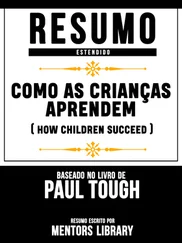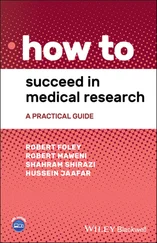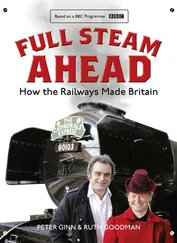What really set the RCP apart from the other two orders of medical practitioners was that they restricted the offering of Fellowship to those individuals with university degrees. However, in terms of scale, the number of physicians was small. In 1800 there were a total of 179 Fellows in England; by 1847 this number had grown to 683. Of these, 76 resided in London, showing that over this period of time the influence of the RCP, which essentially started life as a London‐only organization, had spread to medical practitioners across England. Having said that, the RCP represented less than 5% of all medical practitioners in England by the mid‐1800s.
With regard to surgery it was clear that surgeons had operated as an ancient medical art as far back as the physician. The surgeon performed operations, set broken bones, treated accident cases, and much of the surgeon’s work demanded high levels of hand–eye coordination, dexterity, speed, decision‐making, as well as expertise. It was considered a form of skilled manual labor, and the eighteenth century phrase “The Craft of Surgery” still resonates today in the narrative of surgery as a craft specialty.
Since the middle ages, surgeons in the London area had been organized as a guild. Guilds were associations of merchants or artisans with mutual interests. They were organizations that operated like a combination of a trade union and a professional body. It was only in 1540 that they joined with the barbers to form the Barber–Surgeons Company of the City of London. This relationship lasted until 1745 when the surgeons established a separate city company. In 1800 the surgeons received their Charter as the Royal College of Surgeons of London, and then in 1843 they were made the Royal College of Surgeons (RCS) of England, with the establishment of Membership (MRCS) and Fellowship (FRCS) which remains today.
An important distinction between physicians and surgeons at that point was that surgeons were not university educated. They learned their skills through apprenticeships and by practical training, and not in any way theoretical or university‐based.
The RCS was much larger than the RCP. By the mid‐nineteenth century there were over 8000 practitioners with a surgical license, but only 300 of these were Fellows of the College. The FRCS was not an exclusively London license, and those who held it could practice in all parts of England.
In order to make a living, most members of the RCS also began to prescribe and dispense drugs, and in order to qualify themselves for this they took on a second qualification from the Apothecary Society.
Before 1617, Apothecaries had been a part of the Grocers’ Company of the City of London. It was in that year they obtained a Royal Charter as the Society of Apothecaries. Their charter stipulated that they were responsible for the supply, compounding and sale of drugs in London, and they were distinguished from physicians and surgeons by not being called medical practitioners but “Druggists.”
In 1815 the Apothecaries Act legitimized the practice of medicine by apothecaries and authorized the Society of Apothecaries to grant a Licence of the Society of Apothecaries (LSA) Medical Practice in England. Similar to surgeons, apothecaries were trained by an apprenticeship model and not via a university‐based degree.
The LSA became an increasingly popular qualification amongst medical practitioners, with increasing numbers of physicians granted licenses, allowing them to dispense drugs to their own patients.
So, in the early nineteenth century the landscape of the medical profession in England consisted of three discrete and separately organized professions. These professions were legally defined status groups whose activities were defined by a charter devised by their relevant Royal College or Society. The three professions were ranked in a hierarchical basis with physicians above surgeons, who were perceived as superior to apothecaries. This reflected the explicit class and hierarchical system in society at that time.
Therefore, set against this background, when any reforms into medical regulations were discussed or considered, this typically triggered significant resistance amongst these separate organizations.
Outside of the elite group within the Royal Colleges, day‐to‐day medical practice started to coalesce among the three orders of practitioners. So, on a day‐to‐day basis medical care was less compartmentalized. For example, after the Apothecaries Act 1815, physicians who engaged in prescribing and dispensing drugs were required to take the LSA, irrespective of whatever other license they held. For members of the RCS, the LSA was not a legal requirement to undertake surgical practice, but it became accepted that by 1830s that surgical practitioners also held this qualification.
Structures on the ground began to change as well. It was really in the first 30 years of the nineteenth century that the term General Practitioner (GP) started to emerge, and this term referred to those who practiced medicine and surgery, whether they were licensed by their respective colleges or not.
Further evidence of the divergence away from the central elitist colleges based in London was the organic development of a wide range of supportive structures around the profession. Societies devoted to medical science, social clubs, medical book clubs and a range of medical and interest groups began to flourish. The politics evolved so that over time the majority of practitioners, whether surgical, medical or purely apothecaries, felt distant and isolated from central London and felt that their needs and requirements were not being met.
Although the passing of the Apothecaries Act was hailed as the beginning of medical reform, there were a number of unintended consequences, one of which was the merging of the identity of roles of the surgeon and the apothecary. Thus the act accelerated the process of breaking down distinctions between surgeons and apothecaries, and hence what had become in general, accepted practice on a day‐to‐day basis was enshrined in law.
This brief insight to the early nineteenth century medical world gives a sense of some of the structural and political resistances to change at that time. Despite the Medical Act of 1858, the training of doctors remained variable in quality throughout the 1800s (Peterson 1978).
One significant initiative, as a result of the Medical Act 1858, was the establishment of the forerunner to the GMC, called then the General Council of Medical Education and Registration of the UK. This body was responsible for registration and medical education across the UK.
The Medical Act 1950 established the GMC as it exists today. There remained, however, concerns with regard to the level of assurance and scrutiny. The Merrison Report (Secretary of State for Social Services 1975) made a number of recommendations including a restructuring of the disciplinary processes, particularly for doctors with mental health problems, and led to the development of greater specialization and GP registration. This in turn led to the new Medical Act in 1978. The more recent history of the evolution of medical regulation is covered in Chapter 3.
Current Health Regulators in the UK
The brief histories of three health professions explored above demonstrate an evolving picture in the UK. The professions’ view of the appropriate level of regulation has varied across centuries, and the role and influence of the public has changed immeasurably.
A consultation by the UK government (Department of Health 2017) recognized that while there was a large number of health and social care regulators, there was an inconsistency in approach to regulation and in particular to how fitness‐to‐practice issues are handled. The number of regulatory bodies remains an issue yet to be resolved. Any future proposals to change by amalgamating bodies will be subject to further consultation. One might argue consulting that includes the bodies is not likely to provide a definitive answer.
Читать дальше
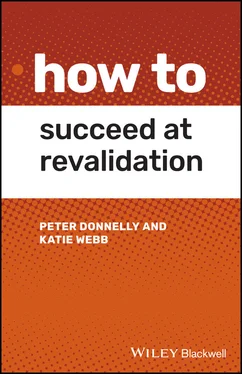

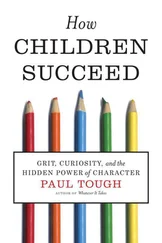

![Коринн МакКей - How to Succeed as a Freelance Translator [calibre 3.46.0]](/books/402693/korinn-makkej-how-to-succeed-as-a-freelance-transl-thumb.webp)

